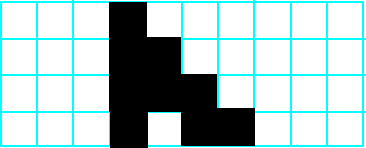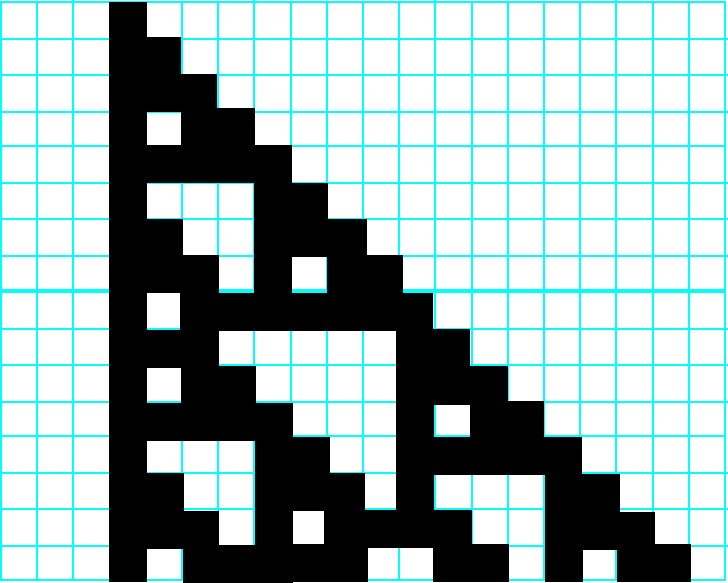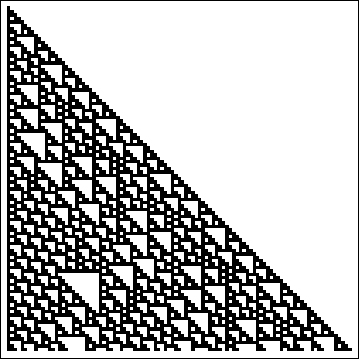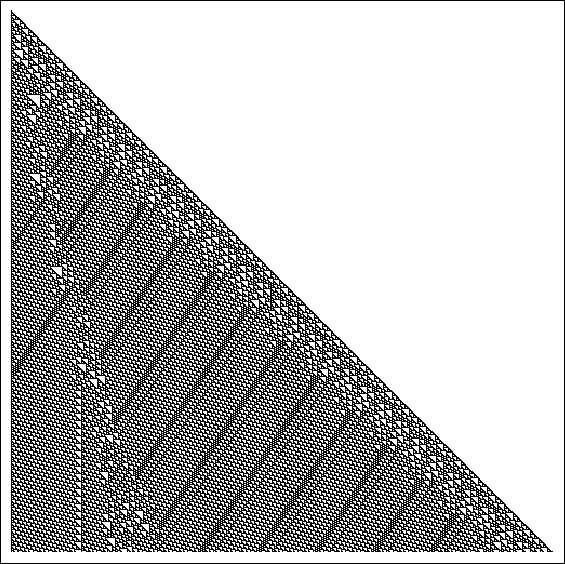The next (fourth) generation is  . Hmmm... a hole!
. Hmmm... a hole!
Here are fifteen generations:  .
.
Fifteen generations takes some time, patience, and care, but it can certainly be done. A definite pattern seems to be emerging! It certainly would be easier if a computer program could do this, wouldn't it? This might have something to do with the fact that CAs weren't studied until computers became commonplace. Actually, it probably is just that nobody thought of it, or, if they thought of it, didn't consider it worthwhile, or didn't think it was "real" mathematics. After all, who would think that such a simple procedure, with such a simple starting place, could produce an output containing complex patterns? If we let a computer take over:
Here are the first 100 generations1:  I can see patterns, but they aren't regular patterns.
I can see patterns, but they aren't regular patterns.
Here are the first 500 generations2: 
Studying the results above and noticing all of the intricate patterns and semi-patterns that appear in the Rule-124 CA, I would have to say, "Yes, a few very simple rules can produce some very complicated output!" But what do other CAs produce? Let's start another CA by hand before we go to the computer.
1 It was made in Mathematica with the command ArrayPlot[CellularAutomaton[124, {{1}, 0}, 100]]
2 Mathematica command ArrayPlot[CellularAutomaton[124, {{1}, 0}, 100]]
last update November 24, 2009 by JL Stanbrough